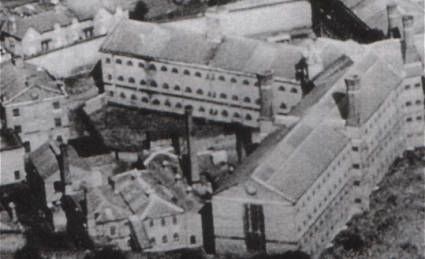The Devil came down to Danbury
In this case it was not a soul he was looking to steal…well not according to the legend that surrounds this particular event.
The second largest open space in Essex can be found in a village on the outskirts of Chelmsford called Danbury, affectionately known as “The common”. I say the second largest, it is the runner up to the huge Epping Forest and as you know, I have written a book about that particular gem of stories and events (The Elements of Epping Forest if you did not already know). When I had horses, I kept them about half a mile away from the eponymous common, and although my horse was pretty much bombproof, she hated this particular stretch of land. To begin with I thought it may be me inadvertently transmitting my fear down to her, but no matter who took her there, she would suddenly become very spooky and start to throw her equine toys out of the pram.
It made me wonder what exactly she was sensing that turned this incredibly chill mare into a hot footing headcase, and after she passed away, I stumbled across what it may have been - or at least an interesting tale to accompany the area.
According to the 16th century Chronicles of England, Scotland and Ireland by Raphael Holinshead, in 1402, the villagers were in St John the Baptist church (just off Main Street) celebrating Corpus Christi day- this date can vary as it is the first Thursday after Trinity Sunday, so occurs between late May and mid June – and there was a horrendous thunder storm ensuing. At the height of the storm, the devil himself (disguised as a grey friar) was said to have entered the church :
“… behaving himself very outrageously, playing his parts like a devil indeed, so that the parishioners were put in a marvelous great fright. At the same instant, there chanced such a tempest of wind, thunder, and lightning, that the highest part of the roof of that church was blown down, and the chancel was all to shaken, rent, and torn in pieces”.
The story intimates that it was Lucifer himself who had brought the storm, to help him destroy the church and scare those worshipping inside it. After he had torn the building to shreds, he left, the villagers picking up the pieces of their broken holy place.
But there is more…
To add insult to injury, the devil came back and stole one of the church’s six bells, the congregation were having no more of his mischief, decided to pursue him and he dropped it, legend has it that it was so heavy (which was more why he dropped it than the fact he was being chased apparently) and the hole it made became a pond – there is actually a hill called Bell Hill, and a pond on that hill, people have visited in the hope of seeing Satan himself. The other version says that he dropped it just by the road, and is now the site of the Bell Inn pub, also the reason why the church has five bells instead of six, it was never replaced.
I could not find in local records why Bell Hill is called that, nor when the pub was named the Bell Inn (although it is on said hill, which could also be the reason), and it may all just fit neatly into the legend, but for those who think Essex is nothing but a commuter county, it was good enough for the devil himself to visit…











